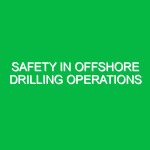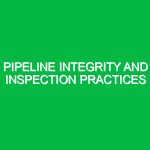Introduction
Pressure testing safety procedures are critical components of health, safety, and environmental (HSE) management in various industries. These procedures ensure that equipment and systems operate safely under pressure, minimizing risks to personnel and the environment. Pressure testing is commonly used in industries such as oil and gas, manufacturing, and construction. It involves filling a system with a fluid, typically water or air, and subjecting it to various pressure levels to detect leaks and verify integrity. Understanding and implementing proper safety procedures during pressure testing is essential for protecting workers and ensuring compliance with industry regulations.
Understanding Pressure Testing
Pressure testing serves multiple purposes, including quality assurance, maintenance, and compliance with industry standards. It helps identify weaknesses in piping, vessels, and other components before they are put into service. However, the process comes with inherent risks. High-pressure systems can lead to catastrophic failures if not managed correctly. This highlights the importance of adhering to pressure testing safety procedures.
Potential Hazards and Risks
Before engaging in pressure testing, it is essential to identify and understand the potential hazards. Recognizing these risks allows for the implementation of appropriate safety measures.
1. Equipment Failure
Equipment failure poses a significant risk during pressure testing. This can include burst pipes, faulty valves, or malfunctioning pressure gauges. When equipment fails, it can release high-pressure fluids or gases, leading to injuries or fatalities.
2. Human Error
Human error is another common hazard in pressure testing. Mistakes in setup, pressure calculations, or monitoring can result in unsafe conditions. Lack of training or inadequate communication among team members can exacerbate these risks.
3. Environmental Hazards
Environmental hazards can arise from leaks or spills during testing. High-pressure fluids can contaminate soil and water sources, leading to environmental damage and regulatory fines.
4. Noise and Vibration
Pressure testing often generates significant noise and vibration. Prolonged exposure can lead to hearing loss or other health issues for workers in the vicinity.
5. Pressure Release Injuries
Improperly controlled pressure release can cause serious injuries. When pressure is suddenly released, it can result in flying debris, burns from hot fluids, or exposure to toxic substances.
Safety Precautions and Best Practices
Implementing safety precautions and best practices is vital for mitigating risks associated with pressure testing. Here are some essential measures to ensure safety during the process.
1. Conduct a Risk Assessment
Before any pressure testing, conduct a thorough risk assessment. Identify potential hazards, evaluate the level of risk, and determine necessary controls. Involve all team members in this process to ensure comprehensive coverage.
2. Ensure Proper Training
All personnel involved in pressure testing must receive adequate training. This training should cover equipment operation, emergency procedures, and hazard recognition. Regular refresher courses can help keep skills sharp.
3. Use Appropriate Personal Protective Equipment (PPE)
PPE is crucial in protecting workers from potential hazards. Depending on the testing environment, this may include safety glasses, gloves, hearing protection, and flame-resistant clothing. Ensure that all PPE fits correctly and is in good condition.
4. Implement Safe Work Practices
Establish and enforce safe work practices during pressure testing. This includes proper equipment handling, clear communication among team members, and adherence to established protocols. Designate a safety officer to oversee operations.
5. Regular Equipment Maintenance
Regularly inspect and maintain all equipment used in pressure testing. Ensure that pressure gauges, valves, and hoses are in good working condition. Replace any damaged equipment immediately to prevent failures during testing.
6. Establish a Safe Testing Area
Create a designated safe testing area, clearly marked and restricted to authorized personnel. Ensure that bystanders are kept at a safe distance during pressure testing. Use barriers or warning signs to prevent unauthorized access.
7. Monitor Pressure Levels Continuously
During testing, continuously monitor pressure levels. Use reliable gauges and alarms to alert the team of any abnormalities. If pressure exceeds safe limits, initiate emergency shutdown procedures immediately.
8. Develop Emergency Response Plans
Prepare and communicate emergency response plans before conducting pressure tests. Ensure that all personnel are familiar with evacuation routes, first aid procedures, and emergency contact numbers. Conduct regular drills to reinforce these procedures.
Regulations and Standards
Adhering to relevant regulations and standards is essential for ensuring safety during pressure testing. Regulatory bodies and industry standards provide guidelines for safe practices.
1. Occupational Safety and Health Administration (OSHA)
OSHA sets forth regulations that govern workplace safety in the United States. These regulations include provisions for pressure testing and the safe handling of hazardous materials. Employers must comply with OSHA standards to protect workers from potential hazards.
2. American Society of Mechanical Engineers (ASME)
The ASME provides codes and standards for pressure testing equipment and procedures. The ASME Boiler and Pressure Vessel Code (BPVC) outlines requirements for the design, fabrication, and testing of pressure vessels to ensure safety and reliability.
3. International Organization for Standardization (ISO)
ISO standards offer guidance on various aspects of pressure testing, including risk management and safety procedures. ISO 9001 focuses on quality management systems, which can enhance safety protocols in pressure testing operations.
4. National Fire Protection Association (NFPA)
The NFPA provides guidelines for fire safety related to pressure testing, particularly in industries where flammable materials are present. Compliance with NFPA standards helps mitigate fire hazards during pressure testing.
Conclusion
Pressure testing safety procedures are vital in mitigating risks and ensuring the safety of personnel and the environment. By understanding potential hazards, implementing safety precautions, and adhering to regulations, organizations can conduct pressure testing safely and effectively. Continuous training and vigilance are essential to maintaining a culture of safety in pressure testing operations. Prioritizing safety not only protects workers but also enhances operational efficiency and compliance with industry standards.


